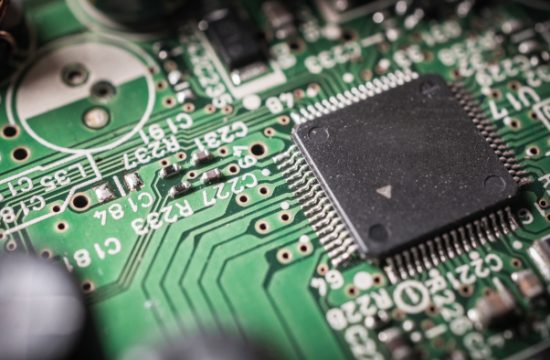
Note: I am not sponsored by Nexus. While I do provide my thoughts on whether it might be a good idea to mine the coin, please make your own research before taking any actions.
If you are like me, you are probably avoiding shitcoins like the plague. Pumping and dumping was profitable in 2017. Today’s crypto market is different. The only way to profit nowadays is to mine a working coin that serves a real purpose and hold it for some months. Longevity seems to be the most important factor nowadays and obviously only truly innovative, useful and well-made coins live long.
Nexus has been around for some time now and you have probably seen it ranking among the most interesting coins to mine with a GPU. If you wonder what Nexus is and whether it’s backed up by some sort of functional product, this article is for you.
Since the Nexus project is quite to hard wrap one’s head around, I have tried to resume and list only the most important details. If you want more info, you can find the link to the white paper at the end of this review.
This topic is pretty relevant today since mining and dumping Nexus coin is not that profitable compared to other GPU minable alternatives such as Monero or Ravencoin. If Nexus is yet another shitcoin then it’s not worth your time. However, what if it’s something worth mining and holding? Let’s try to answer that question.
Nexus in a Nutshell
Nexus is aiming to become the definition of decentralization thanks to its 3D Chain and satellite mesh network. It is quite different from other startups mostly because of its complexity and stellar ambitions.
In two words, Nexus features a unique block creation system (called 3D Chain) that makes CPU, GPU and PoS miners work in team to mine every block. Besides making the network faster and more secure, this will also make it less centralized by making mining pools unnecessary and by taking the spotlight away from PoW miners.
While 3DC is pretty innovative, the ultimate goal of the Nexus project is to create an alternative/parallel blockchain-based internet that will be accessible to anyone from any corner of the globe. In order to achieve that, Nexus is partnered with Vector Space System and Galactic Sky. Together, they are working on producing and launching their own satellites to the Low Earth Orbit (LEO) that will then be hosting the stellar Nexus network. The first prototypes are should be launched in few months.
The Nexus Coin (NXS) is therefore meant to be a payment method that will allow users to buy their own satellites and ground based stations, host their own applications and enjoy other features of the service. The revenue from the commercial usage of the Nexus network by third parties is then planned to be shared between satellite owners, giving NXS real value.
Nexus 3D Blockchain
Go here if you want to learn more about the technology behind the 3D Blockchain.
Nexus block creation is different than in any other coin. We are used to the “one hash rules all” philosophy – the first miner to find the block gets the reward. To mitigate this, mining communities create pools that distribute the rewards for freshly found blocks based on the work done by each individual miner. This leads to what some call it ‘pool hashrate centralization’ where one or two big pools enjoy the lion’s share of the global hashrate of a certain coin.
Nexus involves CPU mining, GPU mining and Staking in the creation of each block. Since a GPU miner cannot mine a block on its own, it cannot claim the full reward either. Once a block has been mined, each participant gets rewarded according to their performance and trust level. The longer you have been mining, the more trust you have.
The participation of three types of miners is caused by the unique architecture of Nexus blocks. In order for a block to become valid, it has got to undergo three different locking levels. As you have guessed, each level is being conducted by a certain type of miner. There is also no redundant block mining – resources are being distributed in a smart way to save power and increase transaction speed.
This system allows Nexus to offer several benefits to its users and miners alike:
- No pool hashrate centralization
- No orphan blocks
- Trust system that increases network stability and security
- More efficient use of resources
- Instant transactions without off-chain solutions like Lightning Network
- Will allow the network to naturally get faster as more nodes join the system. This should fix any scalability issues that the network might face over time.
Security and Resistance to Quantum Computers
The second thing that makes Nexus different from others is the resistance to quantum computers. While modern quantum computers are limited to laboratories and private facilities, the technology is there and might someday soon be widely adopted. The recent successful quantum gate teleportation experiments show us that scientists now are one step closer to creating modular super fast quantum computers.
Over the past decade, quantum-resistant cryptography has gained a lot of attention from academics because of the threat quantum computers might pose to modern cryptography in the near future.
Based on 1024-bit Keccak and Skein hash function and featuring extra large keys as well as evolving signature chains, Nexus in theory belongs to one of the few modern crypto currencies that are resistant to a hypothetical quantum attack.
The extra security measures also allow users to maintain their privacy and security even on mobile wallets. Unlike similar quantum-resistant schemes such as Bliss or Lamport signatures, the signature chain technology makes Nexus more compact and lightweight, which translates into better end-user experience.
NXS Specs
Algorithm: Sha-3
Block Reward: 7.58807300 NXS
Block confirmation time: 60 seconds
Total Supply: 59,161,168 NXS
Additional features:
- Fast access to received funds
- Instant transaction processing
- Scalable transaction capacity (no backlog)
- Payments received are spendable within 3 minutes
Satellite Mesh Network
Despite the different approaches to cryptography, all cryptocurrencies have something in common – they rely on the Internet. The Internet cannot be considered a decentralized network since it is being operated by and stored in centralized nodes (servers). This opens many doors for governments and companies to monitor and control even the most private data.
In order to bypass the limitations of the modern Internet, the Nexus team has decided to create their own distributed satellite and ground based mesh network. The project devs are partnered with Vector Space System – a company dedicated to the research, development and design of nano-satellites that can be launched into orbit by reusable mini rockets (some of which can be 3D printed).
Each satellite acts as a node in the network and the satellites are meant to belong to common folk. Nexus promises this satellite network to be fast, affordable and secure, as well as to have an unparalleled coverage. The platform is being provided by Galactic Sky. The final goal of this partnership is to enhance Nexus decentralization and provide users access to the network from any corner of the globe (apparently globes do have corners).
Once everything is set up and working, Nexus plans on allowing individuals and companies to host third-party applications on their network. People who want to keep their activities away from governmental and corporate regulations will be able to enjoy their privacy by using Nexus. This is also meant to become a source of revenue for the satellite owners. The commercial usage of the network should also make it cheaper to operate for the end user.
To further enhance transparency, Nexus promises to release the sources of both the code and the hardware once the project leaves the WIP category.
Satellite Specs
Altitude: LEO (Low Earth Orbit)
Orbital Layers: 2 – outer layer for data storage, inner layer for communication
Cubesat Size: Different configurations ranging from the small Sub-1U up to 3U
Cubesat Orbit time: ~90 minutes
Distributed Topology
 The satellites mentioned earlier will be also connected to a ground based mesh network. The ground mesh network should eliminate any latency issues. Besides, it should give people access to the Nexus network even when there is no satellite coverage.
The satellites mentioned earlier will be also connected to a ground based mesh network. The ground mesh network should eliminate any latency issues. Besides, it should give people access to the Nexus network even when there is no satellite coverage.
The ground mesh network will include satellite dishes that should allow people use their cellphones and computers to communicate with the satellites and interact with Nexus. This is meant to erase the need of a router or gatekeeper hardware.
The hardware and software for ground devices is still being under development.
NXS Coin Price Prospects
 Will NXS increase in price in the near future?
Will NXS increase in price in the near future?
We know that Nexus aims to create their own parallel internet that will be hosted on nanosatellites and ground-based stations. Common folks like you and me will be able to purchase those nodes with NXS. Those who do not mine their coins but still want to own a node will have to buy their coins, which will certainly lead to a bullish market.
Once the network is live and secured, third parties (companies and individuals alike) will be able to use it for a small fee and host their applications. This again should affect positively the coin.
My point is, if this project takes off and becomes popular, the demand on NXS might grow exponentially, leading to a price increase.
Now, according to the developers, the first satellites will be launched in few months from now. Nexus is planning on leasing those from Galactic Sky to start testing the platform. While testing and bug hunting will not be completed overnight, Nexus is planning on launching community-owned cubesats (small composite satellites made of 10cm3 cubes) in 2019.
The preliminary 1U satellite for Phase 1 deployment are being developed by Phillip Swazey. Phillip worked with Iridium, a satellite communication company that has a constellation of 72 satellites in GEO. The fact that the man and his team have got the required expertise gives me the hope that they will deliver in time.
According to calculations, it will take about 300 cubesats in the orbit for full coverage of the planet. By 2025, Nexus team believes that there will be thousands of Nexus cubesats spinning around the globe.
Nexus Team
A space age cryptocurrency requires a space age team. Just having a bunch of software developers won’t cut it.
Nexus team is comprised of 25 member and they are also partnered with five companies, two of which are dedicated to work with satellites.
As always, I have spent my time doing background checks on the people listed as the team members. I can confirm that all of the core members seem to be real people with real Linked In profiles. Each of the team members seems to be competent and has enough expertise in the field.
You can check the full list of team members here.
Nexus Mining
As we already know, there three ways of mining nexus, two of which are POW and one – POS. POS requires you to have at least 1000 NXS in your wallet. You can mine with less but it is not recommended. To start POS mining, all you need is to get a Nexus wallet.
The two POW mining methods are CPU and GPU mining. Nexus can be mined with both AMD and Nvidia GPUs. Newer models work the best. I think the best results are when we combine POW and POS mining. This way, we can make the freshly mined NXS coins work for us.

Is Nexus a Scam?
As it happens with any project, there is always a part of the community who is playing opposition. Moreover, I’m not surprised that there is a (small) share of the crypto community that claims Nexus to be a scam.
This was even more relevant in early 2017 when Fluffy Pony has interviewed Colin Cantrell. The interview wasn’t the proudest moment in Colin’s career for sure, though most of it was caused by the way the head of Monero was asking the questions.
After discussing Nexus from the technical side for the first 20 minutes, Fluffy Pony went to asking Colin more personal questions and giving commentary. Some of the commentary was pretty harsh, resulting in Colin spending most of the time defending himself rather than talking about the project we are interested to know more about.
The interview has got a lot of support from people who do not like Nexus, though overall the crypto community reacted negatively to the interview and ended up supporting Colin. While definitely fun to watch, the interview contained little information on what Nexus is and whether it can be trusted or not.
In December 2017, a well-known youtuber and crypto enthusiast The Crypto Lark has interviewed Colin on Nexus too. A more constructive and friendly approach resulted in a very fruitful interview during which Colin have unveiled a lot of useful information about the project.
If you know Nexus from Fluffy Pony’s interview, you probably already have a certain opinion on this project. That being said, a lot has changed since that interview. Most of what were mere words back then are now reality, or really close to become real.
In early 2017, Nexus had a small team. Today, they are a pretty solid organization that includes renowned professionals. It’s easy to disbelieve someone who has got such big plans, which is why I understand why Fluffy Pony was so sarcastic about Nexus back in the day.
While I am not claiming that Nexus is the most legit project of the century, I do see why some people have been having a hard time believing Colin Cantrell back in the day. Hopefully, things are different now.
Useful Links
Website: https://nexusearth.com/
Nexus Whitepaper: https://nexusearth.com/nexus-white-paper
Tritium Whitepaper: https://nexusearth.com/tritium-white-paper
Social
Discord: https://discord.gg/wAg3YkJ
Reddit: https://www.reddit.com/r/nexusearth/
Twitter: https://twitter.com/NxsEarth
Github: https://github.com/Nexusoft/Nexus
Nexus donation address: 2SYgwSssi38mgTu2UCZgj4fXFAs6BkBTEmzrTjVwna1sWmcSHBZ
In Conclusion
It’s hard to find a project in the crypto universe that would be more ambitious than Nexus. Unlike most other startups, Nexus seems to have what it takes to live up to the expectations. The project has got a detailed plan, a solid team and a growing loyal community. While none of that necessarily means that NXS is a fail-proof investment, I personally find it promising.
As always, you do your own research first. Also, I would kindly ask you to share anything interesting you find on Nexus in the comments section below:
Thank you for reading. As always, your comments, suggestions and questions are welcome.
Subscribe and stay tuned for further updates!












